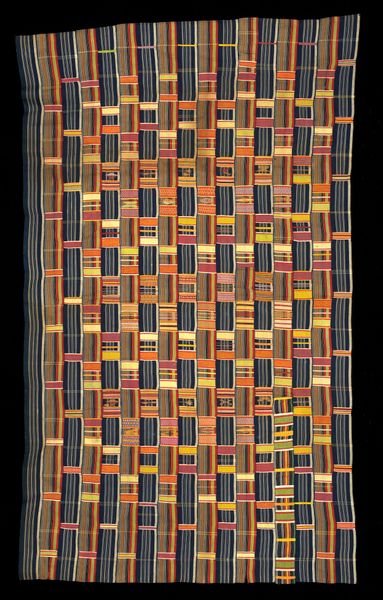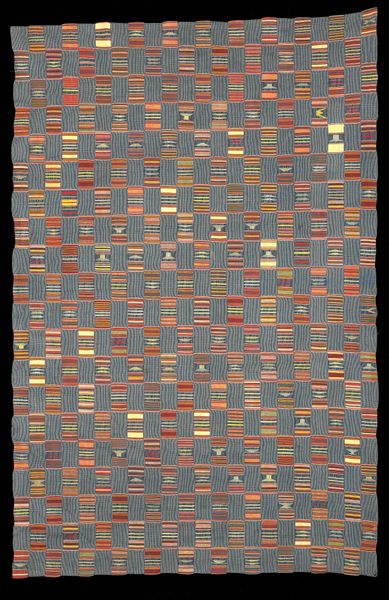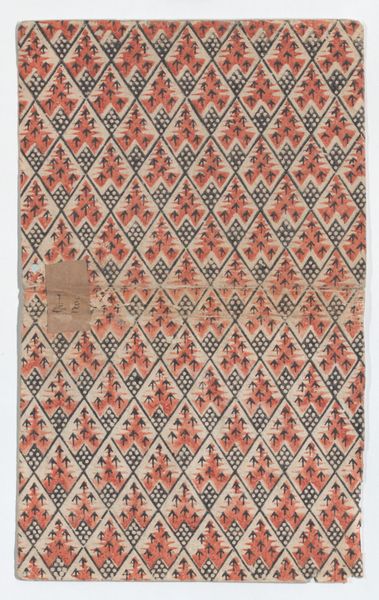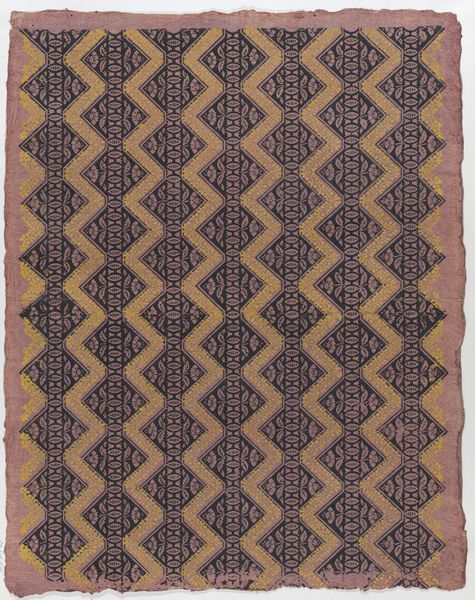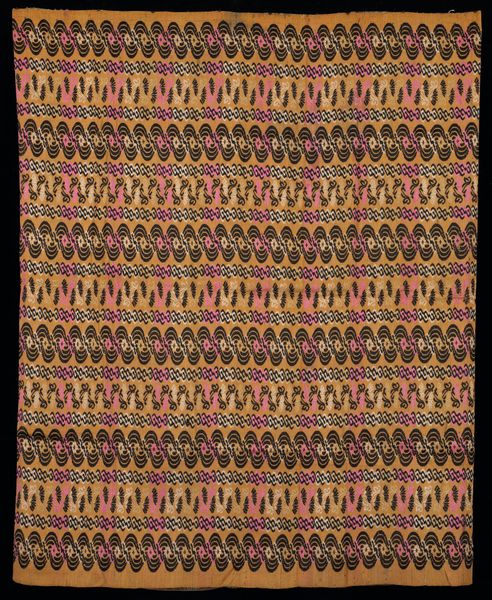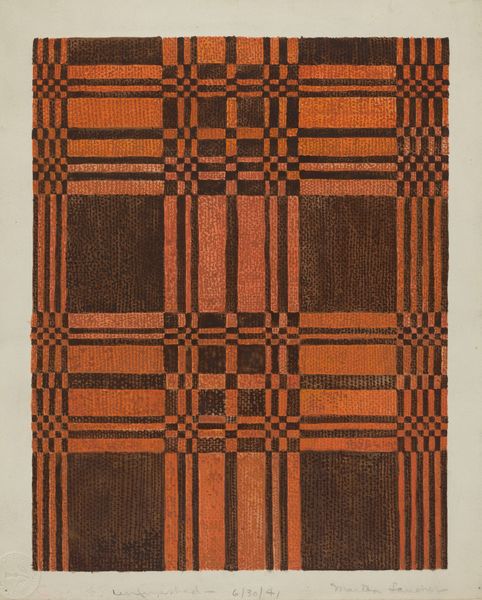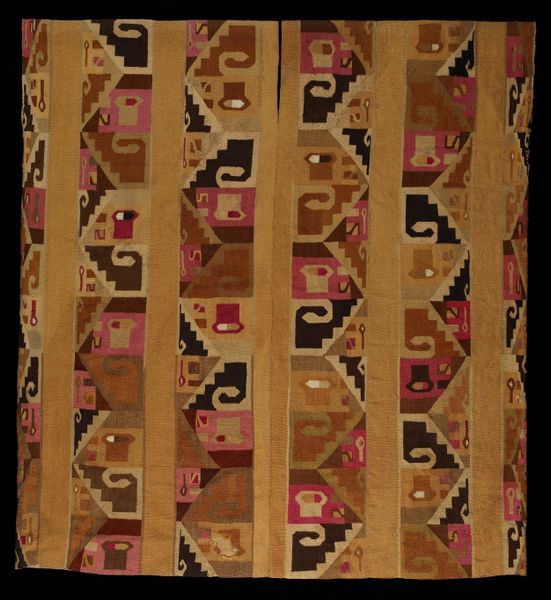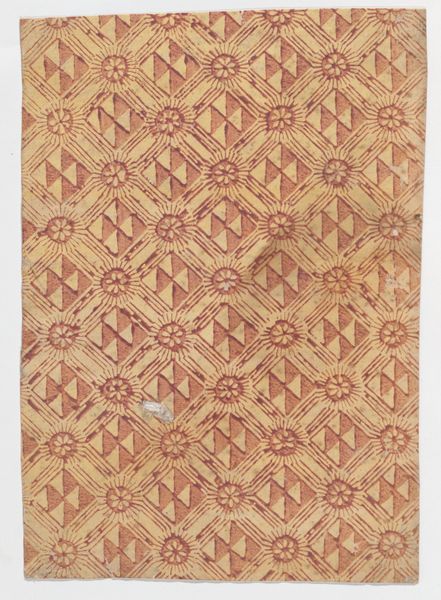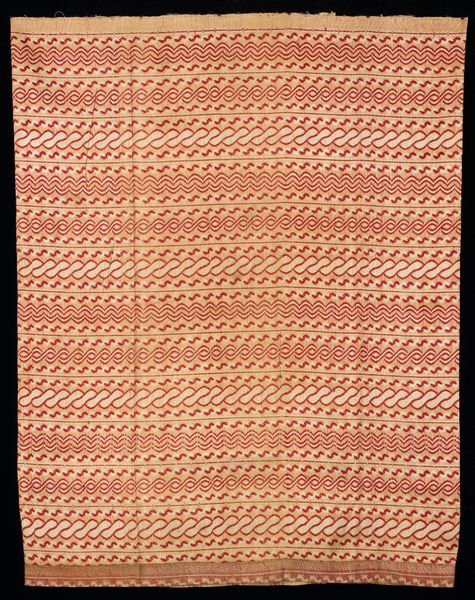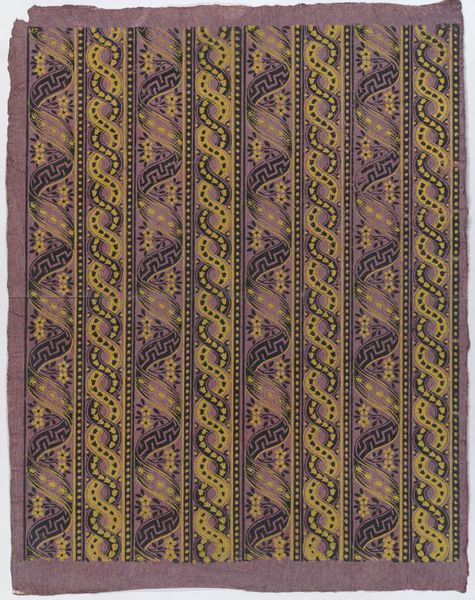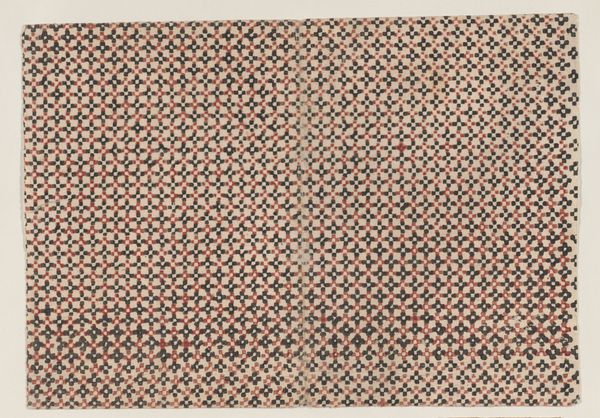
textile, cotton
#
pattern heavy
#
loose pattern
#
textile
#
geometric pattern
#
abstract pattern
#
organic pattern
#
repetition of pattern
#
vertical pattern
#
pattern repetition
#
cotton
#
layered pattern
#
combined pattern
Dimensions: 107 7/8 x 70 1/2 in. (274 x 179.07 cm)
Copyright: Public Domain
Curator: This magnificent textile, titled "Man's Cloth," likely dates from the 20th century and originates from the Ewe people. It's part of the collection at the Minneapolis Institute of Art. Editor: My immediate thought is one of rhythmic precision. The ordered blocks, that tight vertical pattern... it speaks to incredible control over the materials and a sophisticated understanding of the loom. Curator: Absolutely. Looking through a lens of identity and social standing, such cloths held immense significance. Worn by men, these textiles signaled not only wealth but also lineage, status, and power within Ewe society. The creation process, steeped in tradition, becomes a profound marker of belonging. Editor: And it is the creation process I want to understand. To produce something of this scale, with this density of pattern, what was the labor involved? Who had access to these cotton threads, and how were they dyed to achieve such striking coloration? These aren’t just abstract shapes. Curator: Precisely, and within that materiality lies meaning. Each color and motif possibly carries symbolic weight, reflecting historical events, proverbs, or spiritual beliefs particular to the weaver or the patron. Textiles in this context are so much more than mere ornamentation. The history woven within could contain resistance, cultural resilience and affirmations of identity against colonial influence. Editor: The repetitive nature could speak to factory work or industrialized process... yet, this clearly has a hand-made, non-mechanized element. Perhaps each strip produced via an assembly-line like practice where division of labour might challenge assumptions of singular creation. I wonder what degree the maker exercised agency over its total look. Curator: Indeed. Understanding its full scope involves looking closely at the intersectionality of tradition, material culture, and identity. It moves beyond simplistic appreciation, and delves into the stories these patterns attempt to communicate in light of these complex political concerns. Editor: Right, and by engaging critically with materials and their production, we are more sensitive to the broader impact on marginalized workers. Appreciating "Man's Cloth," therefore demands that we ask pointed questions regarding its creation. Curator: Ultimately, I feel this piece exemplifies the potency inherent in textiles to capture complex intersections of social life. Editor: For me it's about understanding and honouring these painstaking and ingenious processes of manufacturing cloth in traditional communities that deserves a high profile.
Comments
minneapolisinstituteofart almost 2 years ago
⋮
Ewe and Asante styles are often differentiated on the basis of the motifs used in the pattern blocks. Although it is true that Ewe cloths may contain recognizable, figurative images of people, objects, or animals, many cloths have very simple decoration. Geometric forms, abstract figures or simple stripes are frequently used, and occasionally there is no additional design at all in between the blocks of color. Figurative images require more time and skill to execute, and are usually found on the more expensive cloths. It is likely that this piece, with its modest use of ornamentation, represents the type of cloth that a person of average means would be able to afford. Kente cloths are very expensive, and even a modest cloth requires a substantial investment on the part of the purchaser.
Join the conversation
Join millions of artists and users on Artera today and experience the ultimate creative platform.
